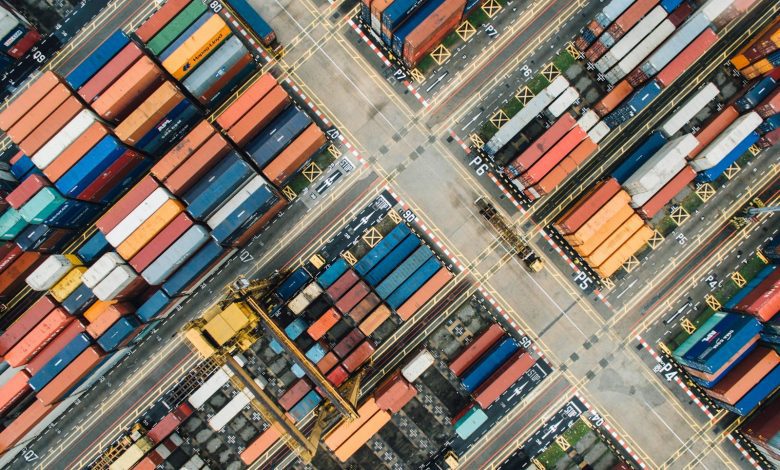
History often offers valuable insights into what we might expect as global trade tensions escalate. While protectionist policies are often introduced with well-meaning intentions, they have sometimes resulted in unintended consequences. In this article, we will explore several key examples of protectionism and uncover critical lessons to help us investors navigate today’s increasingly fragmented trade landscape.
Smoot-Hawley Tariffs (1930s)
The Smoot-Hawley Tariff Act emerged during the early stages of the Great Depression as American policymakers sought to protect domestic industries from foreign competition. Signed into law by President Herbert Hoover on 17 June 1930, the legislation raised approximately 900 import tariffs by an average of 40% to 60%. The act aimed to shield American farmers, who constituted about 20% of the U.S. population and struggled with falling prices due to post-WWI European agricultural recovery.
What happened next:
Global retaliation: Trading partners like Canada and Europe retaliated with their tariffs, triggering a 66% collapse in global trade volumes between 1929 and 1934.
Deepened crisis: U.S. unemployment soared to 25%, and the global economic downturn worsened. Rather than strengthening the American economy, the Smoot-Hawley tariffs triggered retaliatory measures from trading partners worldwide.
U.S.-Japan Auto Tariffs (1980s)
In the early 1980s, Japan overtook the United States as the world’s largest automobile producer, manufacturing over 10 million vehicles annually. Alarmed by the rapid decline of Detroit’s ‘Big Three’ automakers, which faced plummeting market share and mounting financial losses, the Reagan administration imposed Voluntary Export Restraints (VERs) on Japanese cars in 1981. These quotas capped Japan’s auto exports to the U.S. at 1.68 million vehicles per year, ostensibly to shield American manufacturers from foreign competition.
What happened next:
Higher prices for consumers: Japanese automakers circumvented export limits by shifting production to higher-margin luxury vehicles (e.g., Lexus, Acura), maximising profits within the quota. This strategy, combined with reduced competition, drove up prices for both imported and domestic cars.
Adaptation over protection: Rather than reviving Detroit, the Voluntary Export Restraints (VERs) accelerated Japan’s shift toward establishing U.S.-based manufacturing. Honda had already opened its first factory in Ohio in 1979, but the VERs pushed other Japanese automakers to follow suit, sidestepping trade barriers and embedding their brands more deeply into the American market, highlighting that trade barriers alone couldn’t fix deeper structural issues.
Trump’s Tariffs (2018-2020)
In 2018, the Trump administration launched an aggressive trade intervention, imposing tariffs that fundamentally reshaped the U.S. international economic landscape. These wide-ranging tariffs encompassed US$303.7 billion in goods, approximately 12.6% of total U.S. imports—with a strategic focus on China. The policy addressed two critical economic objectives: reducing the U.S. trade deficit and protecting American intellectual property rights.
What happened next:
Consumers and manufacturers suffer: U.S. manufacturers and households absorbed higher prices, with the CBO report estimating consumer prices will rise by 0.5% and reducing average real household income by about US$1,300.
Supply chain shifts: Instead of reshoring to the U.S., companies diversified to Vietnam, Mexico, and other emerging markets. The U.S. trade deficit with China persisted.

Lessons for investors
1. Inflation risk
History underscores that protectionist policies like tariffs catalyse inflation by driving up input costs and consumer prices. Faced with shrinking profit margins, companies often transfer these burdens to consumers—a dynamic evident in the automotive sector, where vehicle prices climbed steadily.

History has highlighted a recurring pattern: tariffs disrupt supply chains, incentivise price hikes, and stifle economic efficiency. Rather than shielding domestic industries, trade wars function as hidden taxes on households, eroding purchasing power and compounding inflationary pressures
2. Emerging market opportunities
Trade wars between major economies often spark strategic realignments, with emerging markets emerging as unexpected beneficiaries of redirected investment and trade flows. The U.S.-China tariff escalations in 2018 exemplify this dynamic: as companies sought to bypass punitive duties, production chains began shifting to third-party nations like Vietnam, Mexico, and Malaysia. Vietnam, for instance, Vietnam saw foreign direct investment (FDI) surge by 7.2% in 2019 as manufacturers relocated factories from China.

3. Some sectors are more vulnerable
Politically sensitive sectors like agriculture frequently emerge as prime retaliation targets in trade wars, as seen in 2018 when China’s 25% tariff on U.S. soybeans slashed American exports to the country by 75% within a year. Meanwhile, manufacturing and tech sectors, dependent on cross-border inputs, face cascading disruptions.
For example, U.S. tariffs on Chinese semiconductors and electronics components (2018–2020) inflated production costs for automakers and consumer tech firms, sparking price hikes and supply chain delays. While sectors like defence and critical infrastructure often secure tariff exemptions for national security reasons.
4. Expect market volatility
As illustrated by a recent event, trade policy volatility often triggers extreme market swings: the S&P 500 plunged 4.8% a day after the U.S. recently announced reciprocal tariffs on trading partners, only to surge 9.5% a week later—when President Trump abruptly paused the measures.
This whiplash effect underscores a recurring pattern: markets frequently overreact to protectionist headlines, pricing in worst-case scenarios before recalibrating as the actual economic fallout (or lack thereof) materialises. Historical examples, like the 2018–2020 U.S.-China trade war, reveal similar turbulence, with equities oscillating wildly on tariff threats and truces.
The fifth perspective
In today’s interconnected global economy, trade tensions continue to pose a persistent risk—and history makes one thing clear: protectionist policies rarely deliver on their promises. Instead, they often bring unintended fallout—higher consumer prices, disrupted supply chains, and increased market volatility.
As investors, it’s important to remain calm and level-headed during periods of trade tension and uncertainty. Reactionary decisions based on headlines can often lead to poor timing or unnecessary losses. Instead, take a strategic approach by focusing on companies that are less exposed to international trade risks—particularly those that generate most of their revenue domestically and are shielded from import or export tariffs.
Additionally, prioritize businesses with strong pricing power—these are companies that offer essential or highly differentiated products and can pass increased costs on to consumers without significantly affecting demand. This ability to maintain margins during inflationary or tariff-driven cost pressures is a key sign of resilience. By concentrating on these types of companies, investors can better position their portfolios to withstand volatility and preserve long-term growth potential.



